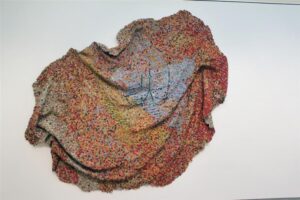Is there a place for creative consciousness in Nigeria?
Consciousness is being aware of and responsive to one’s surroundings.
We hear that people are declared conscious or unconscious. Now, this post is not about morbidity, so please bear with us. When one is conscious, it means simply being alive. Can we ‘be’ without awareness? Perhaps not, so consciousness begins with awareness—knowing something. There is a journey of becoming aware, almost as a child, and over time, through experience, one starts to see things more comprehensively.
Could this be what Deepak Chopra and other spiritual guides propose? A sense of awakening, to be more connected to nature and the life around us.
So what does this have to do with the creative industries, you might be wondering? Can we bring consciousness into creative practice? Or can one be creative without having consciousness? Creativity, at its core, requires some level of awareness for ideas to come through. It means that to be truly creative, one needs to be conscious. So there is a tautology in our focus on creative consciousness. Possibly.
If this is the case, can we look at the type of work we are producing and identify the ways they demonstrate a consciousness of our surroundings? What ideas, and emotions do we seek to convey? How do we foster stronger connections among ourselves? How do we use our work to build rather than to critique, shame, or destroy?
Could consciousness be a sense of creating, making, or building? We think so. It proposes a degree of responsiveness that elevates simple concepts into powerful artistic creations. Before you think this is merely idealistic, there are so many examples around the world, but also on our continent and closer to home, in Nigeria, that we can draw examples from. What’s more, many of these people have gone on to deepen this expression, this awareness and convert it into a sort of responsiveness that has expanded their work on a global scale.
Let’s start with El Anatsui (a Ghanaian academic and artist who taught at the University of Nigeria, Nsukka). Known for his captivating metal sculptures, El Anatsui’s work reveals a keen awareness of societal and environmental problems. His works of art, which he creates from scraps of aluminium and bottle caps, speak volumes about consumption, waste, and transformation. The art of Anatsui is an example of how a strong awareness of our environment may be transformed into breathtaking, intentional works of art.

Step into the vibrant world of Jide Olanrewaju’s Naij, a riveting documentary that depicts Nigeria’s struggle for independence! Jide delves into his creative consciousness through the lens of his creative imagination, constructing a mesmerising tale that paints a picture of the valiant battle that prepared the road for Nigeria’s freedom.
Nnenna Okore is a US-based Nigerian artist who masterfully incorporates the idea of consciousness into her sculptures. She interacts with the environment and cultural history through the use of complicated techniques and organic materials. Her art transcends physical forms, inspiring viewers to reflect on how closely related nature and human emotion are. The premise that heightened awareness of the world around us can inspire transformative and thought-provoking works of art is demonstrated by Okore’s work. What’s more, she was once El Anatsui’s student at CCA Lagos, showing the importance of passing on the baton and developing others to use their medium to demonstrate awareness.
However, awareness is one thing.
Consciousness is to be aware of and responsive to one’s surroundings.
The other part of the equation is to be responsive. Why is this important now? There is a sense of interest in African forms of creativity. However, this has been met with criticism for being commercialized, thus moving artists and other creatives from expressing consciousness towards stifled and bland work, hampering the limitless potential of imagination and falling short of the truly exceptional.
Setting the agenda for the future, the vision for Nigeria, spurring a belief that the whole is greater than the sum of its parts, defining the alternate futures, and alternate they have to be, because moving in the same manner as we have will not lead us to a future that enhances the quality of life for many Nigerians.
It is in times like this that, as an industry, we look inward to say, How do we show the way to others? The creatives, who are by the nature of their work more sensitive and have a heightened and sharpened state of awareness, can convert this into responsiveness to inspire others to see themselves in a different, better light, with a deeper sense of self and purpose.
There is a space that needs to be filled. The design of a better future, the narrative for the future of Nigeria, of Africa, and this responsiveness needs to be ignited in more people by those in the creative industries.
